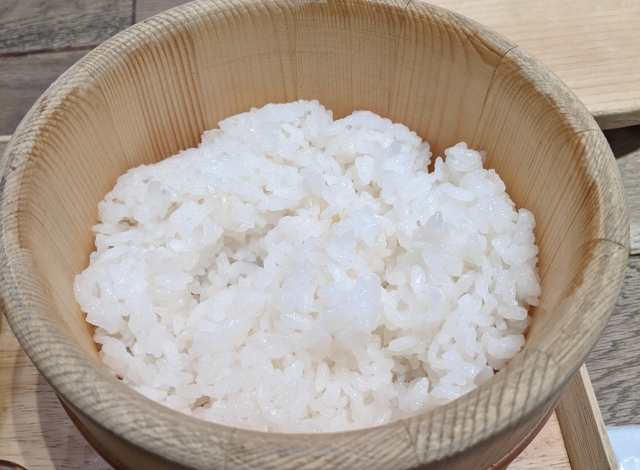
Cooked in a traditional earthenware pot, there’s something about this Maboroshi no Koshihikari rice that almost spirited him away.
It only took until he turned 49 years old, but our bread-loving Japanese-language reporter Mr. Sato has finally fallen in love with rice. The other day, he was so overcome by a craving for the good stuff that he typed “yummy rice Tokyo” into Google to see what he could find. Salon Ginza Sabou in Tokyo’s Ginza district is what popped up first, so he decided to make a beeline there.
The restaurant is located in the second basement floor of the Tokyu Plaza Ginza shopping building, right outside the ticket gates for the Tokyo Metro Marunouchi Ginza Line at Ginza Station. It has a welcoming, bright atmosphere.
Mr. Sato got good vibes as soon as he sat down to look at the menu as the very first page provided an explanation of the “Yukihotaka” variety of Maboroshi no Koshihikari rice. The Koshihikari brand is already one of the most famous around the country, and this particular variety has won prizes for ten years running in a national tasting contest. It’s even been recognized by the Imperial Household as a superior rice cultivar. There was no way that this rice wouldn’t knock his socks off.
▼ To top it off, the restaurant cooks it in a traditional Iga Ware earthenware pot.
For a set teishoku meal, there are four main dishes and 12 side dishes, from which you can choose one and three from the list respectively. You can also choose your preferred style of rice, whether it’s the white Yukihotaka, germinated brown rice, or super barley rice–which costs an extra 220 yen (US$1.66).
Similarly, it was going to be an impossible task for him to choose his side dishes. The Sugita Ume (Japanese apricot) from Yokohama cost an extra 350 yen but greatly piqued his interest. However, he eventually had to bite the bullet and choose something if he wanted to eat anything at all.
In the end he decided to go with the most expensive set meal at 2,200 yen which featured simmered splendid alfonsino (a bright red fish) as the main dish. In addition to his Yukihotaka rice served in a wooden tub, the set also came with free miso soup.
The arrangement of the fish with vegetables was gorgeous. It included boiled spinach, fried Japanese eggplant, and Manganji pepper garnished with spring onions, threads of chili pepper, and even edible chrysanthemum flowers.
As intricate as that looked, Mr. Sato always has a soft spot for side dishes and decided to begin with those. He had ordered boiled rapeseed blossoms, simmered domestic young bamboo shoots, and stewed cod roe.
First, however, he opened the lid to the rice to admire it. This photo doesn’t quite do it justice, but it was pure white in color and almost seemed to be shining out.
He portioned some out in his rice bowl and took a bite, at which point he could appreciate its springy and glorious texture. A subtle sweetness grew in his mouth the more he chewed. It was as if he could almost feel the power of the earth emanating from the grains…who needed other dishes when he could just eat this?! The grains didn’t get stuck in his throat, either, but washed down very smoothly with water as if he were eating noodles.
The side dishes were also simple in preparation to draw out their natural flavor. The bonito flakes covering the rapeseed blossoms were particularly good. He started fantasizing about pairing these flakes along with the Yukihotaka rice in an onigiri rice bowl–he might not be able to recover from such a combination.
The bamboo shoots were also just lightly seasoned. He enjoyed the feeling of taking a crisp bite out of them.
This dish also came with the leaf bud of a Japanese pepper tree. It looked like it had just popped open, and as a result, Mr. Sato felt that some door to his hidden youth also burst open at that moment. Isn’t spring wonderful?
Finally, the cod roe was the perfect complement to the rice. He alternated bites of each and felt that his appetite could continue forever.
Speaking of which, he didn’t even try to fight against that temptation and was already working on his second bowl–all without touching the main dish yet!
Now, Mr. Sato was usually content with one just one bowl of rice, yet here he was finishing a second. He called out for more and his wooden tub received another two servings of the magical Yukihotaka.
He happily got his third bowl ready to go and prepared to take on the main dish that he had saved for last.
The fish was super thick and fleshy.
Perhaps because of that, it was a little bit light on flavor. He wished there was just a tad more ginger to add a burst of something. That certainly didn’t stop him from consuming the whole thing, though.
And so, Mr. Sato somehow made it through his meal of way more rice than he typically eats. He encourages you all to visit Salon Ginza Sabou if you’d also like to experience just how addicting good white rice can be. Just be careful that you don’t overeat, like our team is prone to do!
Restaurant information
Salon Ginza Sabou / サロン ギンザサボウ
Address: Tokyo-to, Chuo-ku, Ginza 5-2-1 B2 floor
東京都中央区銀座五丁目2番1号 B2F
Open: 11 a.m.-10 p.m.
Website
All images © SoraNews24
● Want to hear about SoraNews24’s latest articles as soon as they’re published? Follow us on Facebook and Twitter!
[ Read in Japanese ]

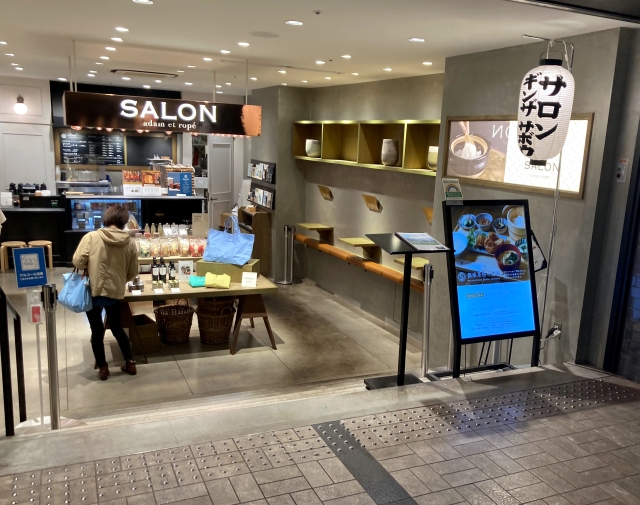
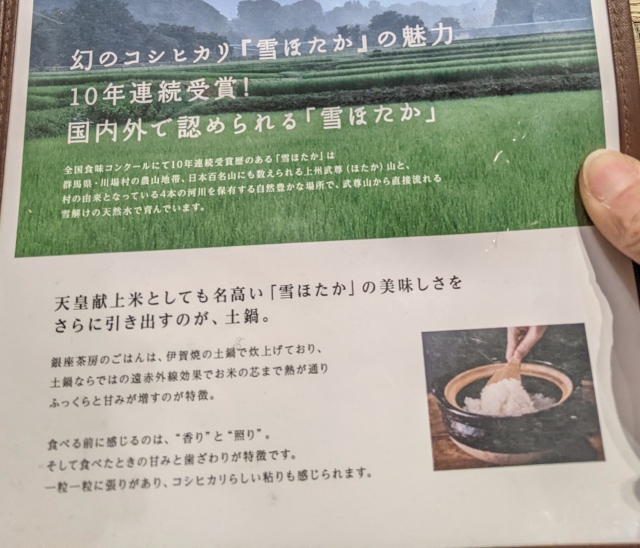
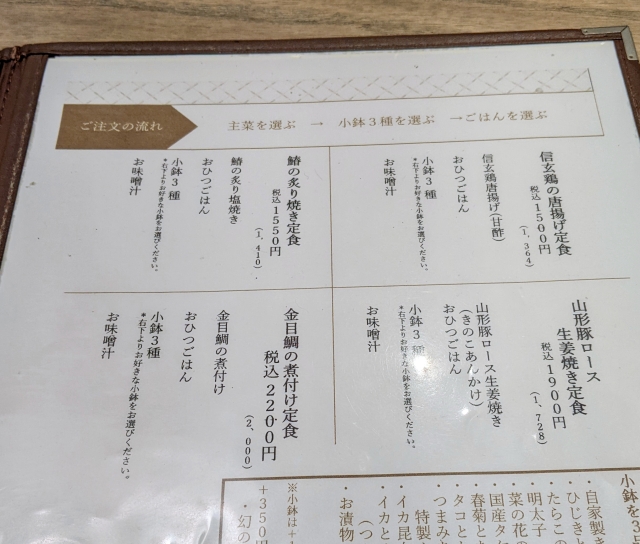
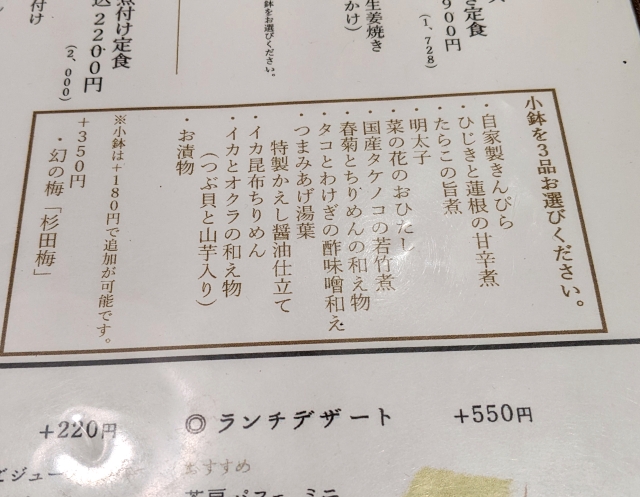
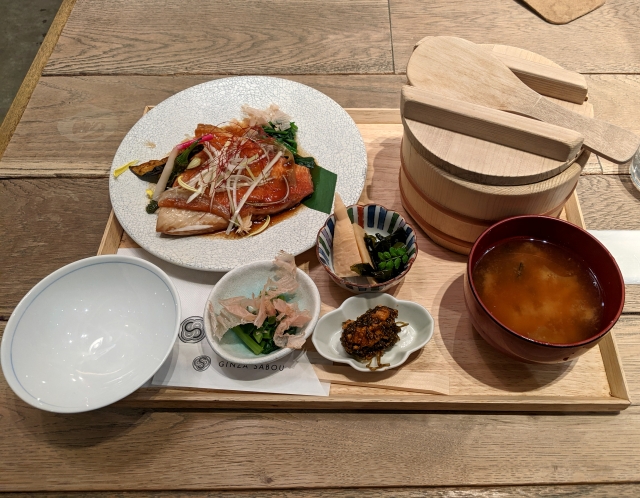
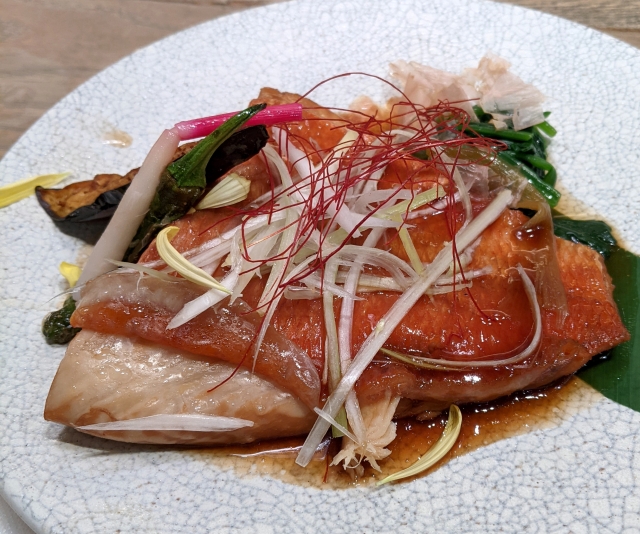
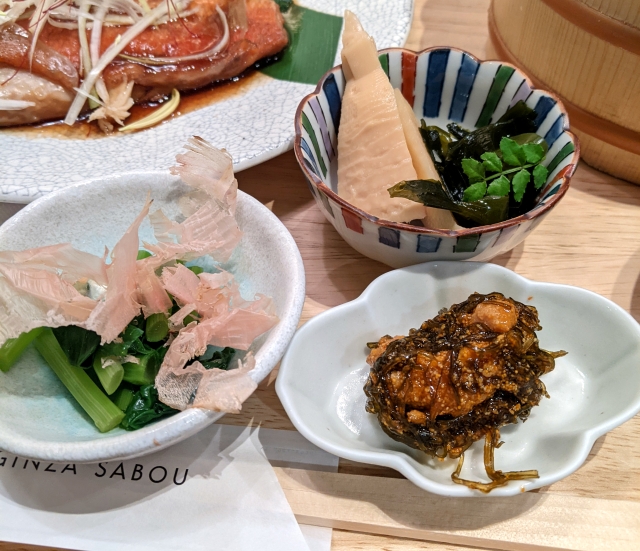
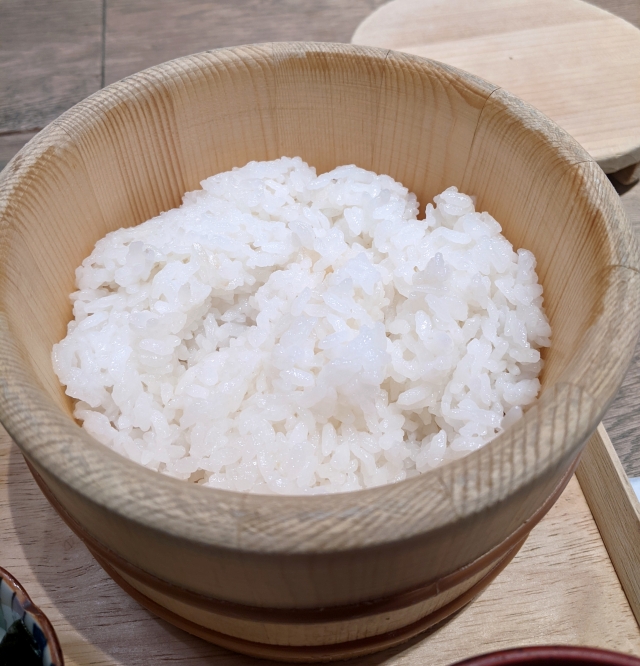
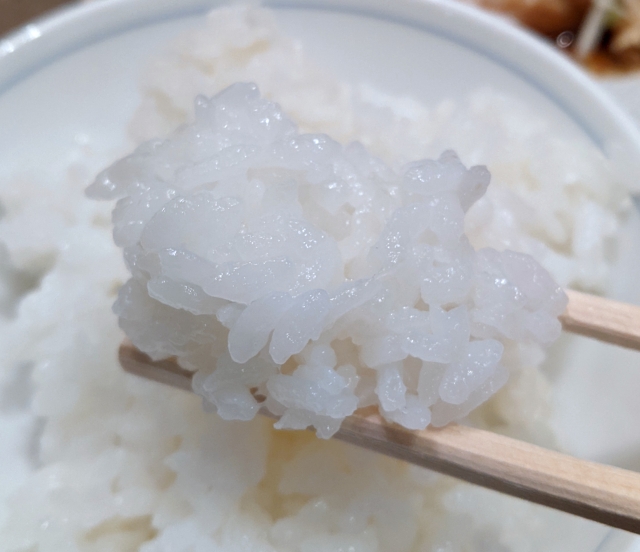
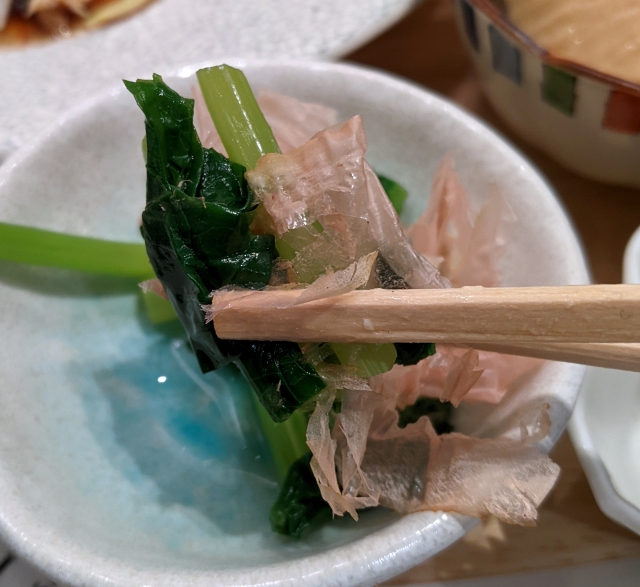
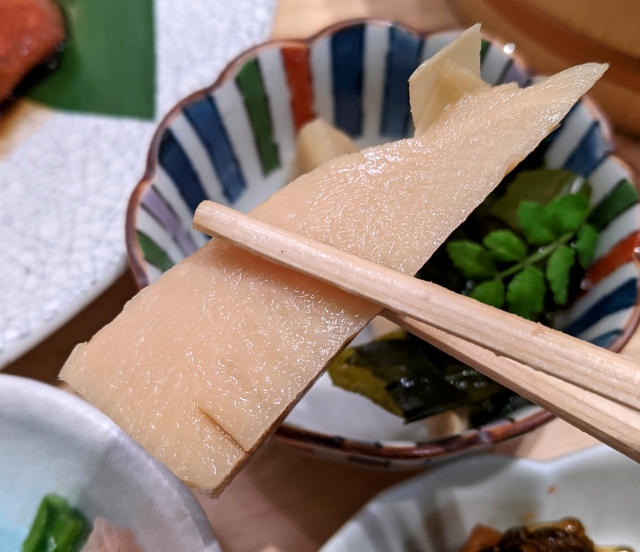
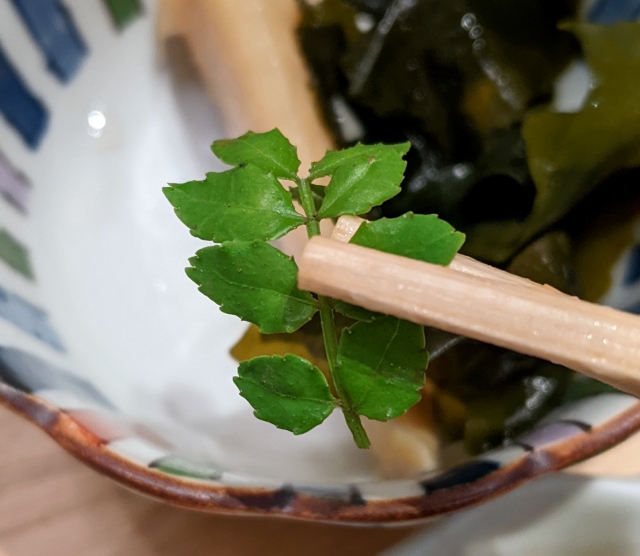
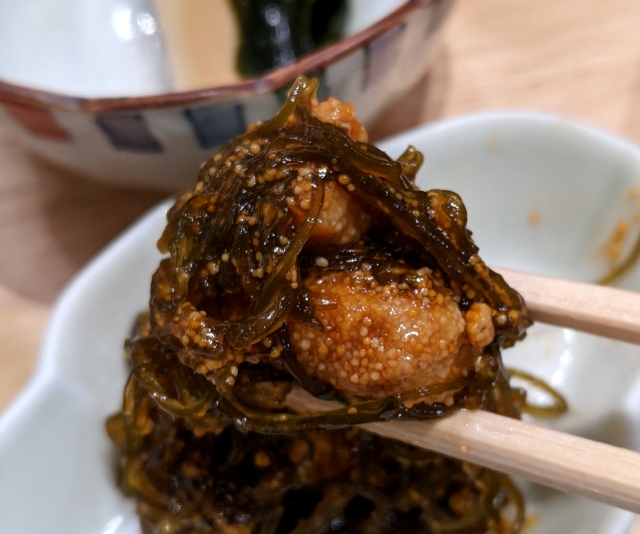
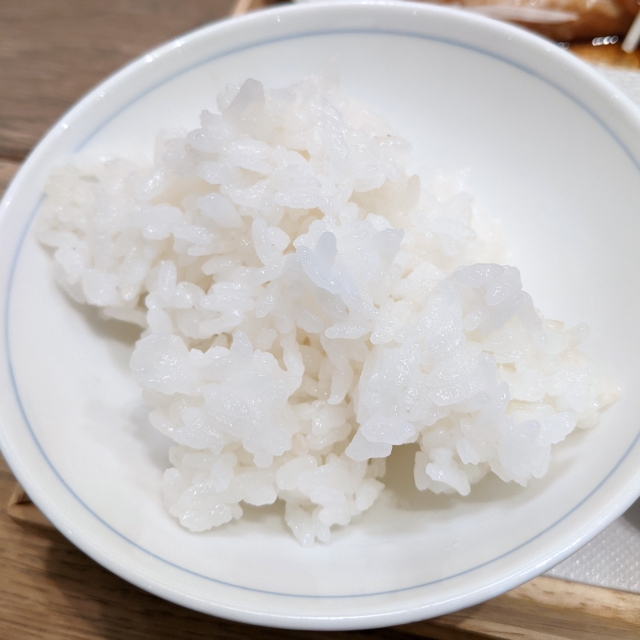
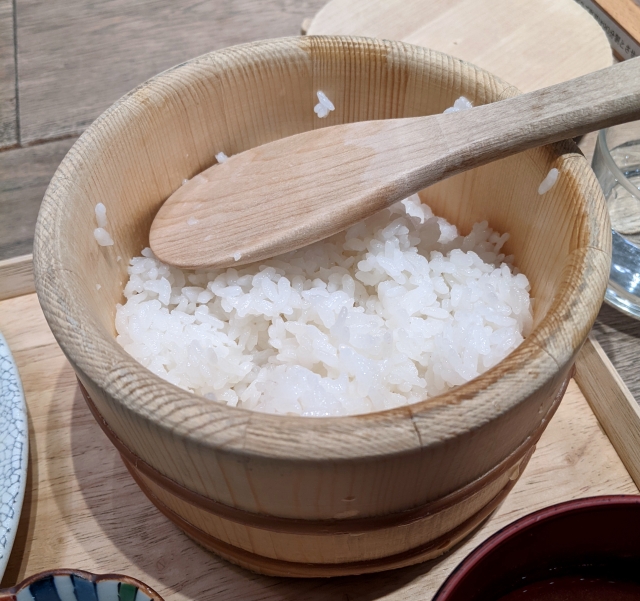
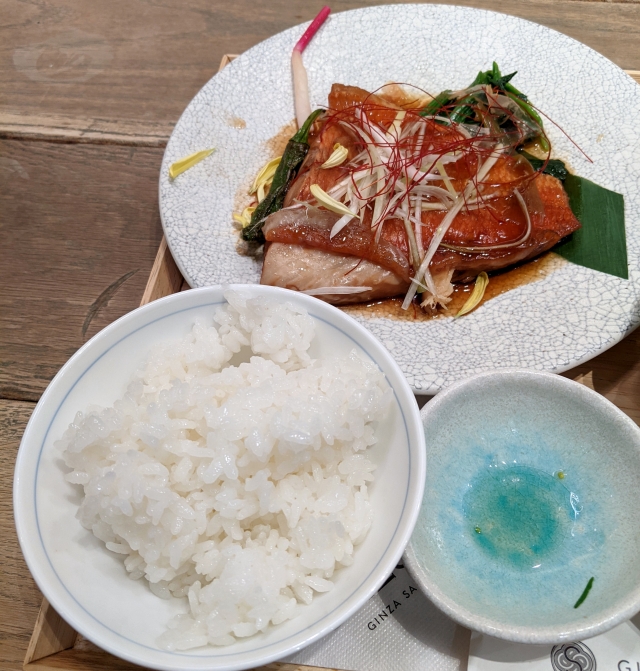
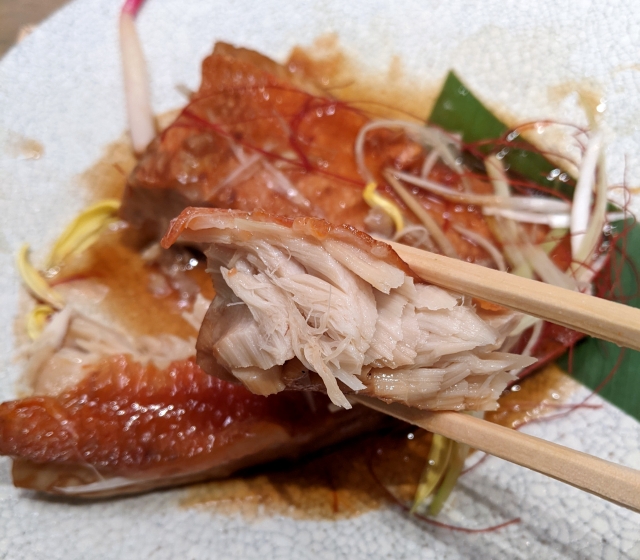
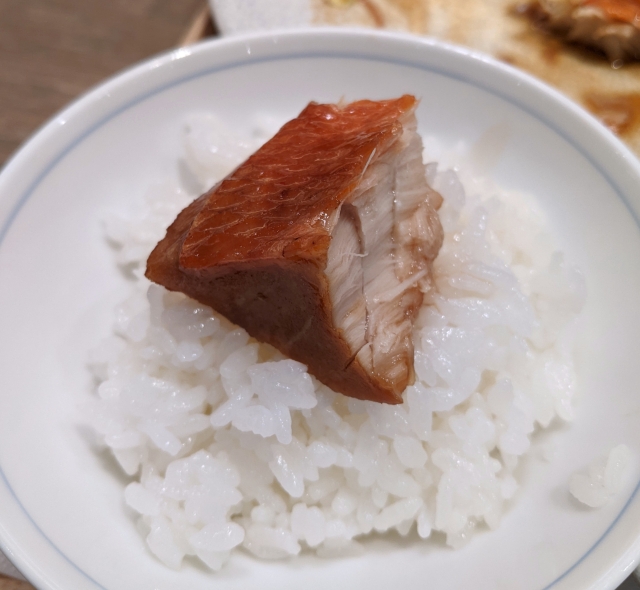
 Yakiniku Like in Tokyo starts serving up solo shabu shabu hot pot, and we tried it
Yakiniku Like in Tokyo starts serving up solo shabu shabu hot pot, and we tried it Tokyo restaurant offers “DIY Tempura Bowls,” so of course we had to go check it out
Tokyo restaurant offers “DIY Tempura Bowls,” so of course we had to go check it out Mr. Sato shows us what happens when you try to cook rice with only eggs 【SoraKitchen】
Mr. Sato shows us what happens when you try to cook rice with only eggs 【SoraKitchen】 Mr. Sato attacks a massive castle of seafood at a new restaurant in Tokyo Skytree’s Solamachi
Mr. Sato attacks a massive castle of seafood at a new restaurant in Tokyo Skytree’s Solamachi $89 “Phantasmal Sushi Roll” fancies up life with Matsusaka beef and truffle salt 【Taste Test】
$89 “Phantasmal Sushi Roll” fancies up life with Matsusaka beef and truffle salt 【Taste Test】 How to order snacks on a Shinkansen bullet train in Japan
How to order snacks on a Shinkansen bullet train in Japan Burger King Japan suddenly adds Dr. Pepper and Dr. Pepper floats to its menu nationwide
Burger King Japan suddenly adds Dr. Pepper and Dr. Pepper floats to its menu nationwide New Nintendo Lego kit is a beautiful piece of moving pixel art of Mario and Yoshi【Photos】
New Nintendo Lego kit is a beautiful piece of moving pixel art of Mario and Yoshi【Photos】 Hello, cosmetics! Clinique teams up with Hello Kitty this summer for first-time collaboration
Hello, cosmetics! Clinique teams up with Hello Kitty this summer for first-time collaboration Demon Slayer: Kimetsu no Yaiba gets new roller coaster attractions and food at Universal Studios Japan
Demon Slayer: Kimetsu no Yaiba gets new roller coaster attractions and food at Universal Studios Japan 11 different ways to say “father” in Japanese
11 different ways to say “father” in Japanese Kyoto tea merchant’s matcha parfait ice cream bars: The desserts we’ve been waiting 187 years for
Kyoto tea merchant’s matcha parfait ice cream bars: The desserts we’ve been waiting 187 years for East meets West in the Pacific-centered version of the world map
East meets West in the Pacific-centered version of the world map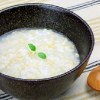 What do you eat when you catch a cold? We asked 11 of our Japanese reporters
What do you eat when you catch a cold? We asked 11 of our Japanese reporters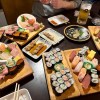 Shinjuku izakaya’s all-you-can-eat-and-drink plan is one of Tokyo’s best secret cheap eats
Shinjuku izakaya’s all-you-can-eat-and-drink plan is one of Tokyo’s best secret cheap eats Nintendo history you can feel – Super NES, N64, and GameCube controllers become capsule toys
Nintendo history you can feel – Super NES, N64, and GameCube controllers become capsule toys “The most Delicious Cup Noodle in history” – Japan’s French Cup Noodle wins our heart【Taste test】
“The most Delicious Cup Noodle in history” – Japan’s French Cup Noodle wins our heart【Taste test】 Starbucks releases a cute Frappuccino and Unicorn Cake…but not in Japan
Starbucks releases a cute Frappuccino and Unicorn Cake…but not in Japan Kyoto Tower mascot termination reveals dark side behind cute Japanese characters
Kyoto Tower mascot termination reveals dark side behind cute Japanese characters McDonald’s Japan’s Soft Twist Tower: A phantom ice cream only sold at select branches
McDonald’s Japan’s Soft Twist Tower: A phantom ice cream only sold at select branches Yabai Ramen: What makes this Japanese ramen so dangerous?
Yabai Ramen: What makes this Japanese ramen so dangerous? Finally! Nintendo Japan expands Switch 8-bit controller sales to everybody, Online member or not
Finally! Nintendo Japan expands Switch 8-bit controller sales to everybody, Online member or not Japanese government wants to build luxury resorts in all national parks for foreign tourists
Japanese government wants to build luxury resorts in all national parks for foreign tourists To combat declining birth rate, Japan to begin offering “Breeding Visas” to foreigners
To combat declining birth rate, Japan to begin offering “Breeding Visas” to foreigners 10 things you should buy at 7-Eleven in Japan
10 things you should buy at 7-Eleven in Japan Studio Ghibli releases anime heroine cosplay dresses that are super comfy to wear
Studio Ghibli releases anime heroine cosplay dresses that are super comfy to wear Woman charged for driving suitcase without a license in Osaka
Woman charged for driving suitcase without a license in Osaka Studio Ghibli unveils My Neighbour Totoro miniature house model
Studio Ghibli unveils My Neighbour Totoro miniature house model Kyoto experiencing problems with foreign tourists not paying for bus fares, but not on purpose
Kyoto experiencing problems with foreign tourists not paying for bus fares, but not on purpose Fighting mild hunger with a Japanese soda that turns into jelly in the stomach【Taste test】
Fighting mild hunger with a Japanese soda that turns into jelly in the stomach【Taste test】 Studio Ghibli’s Howl’s Moving Castle tapestry unveiled in Japan for first time
Studio Ghibli’s Howl’s Moving Castle tapestry unveiled in Japan for first time McDonald’s new Happy Meals offer up cute and practical Sanrio lifestyle goods
McDonald’s new Happy Meals offer up cute and practical Sanrio lifestyle goods Sales of Japan’s most convenient train ticket/shopping payment cards suspended indefinitely
Sales of Japan’s most convenient train ticket/shopping payment cards suspended indefinitely Sold-out Studio Ghibli desktop humidifiers are back so Totoro can help you through the dry season
Sold-out Studio Ghibli desktop humidifiers are back so Totoro can help you through the dry season Japanese government to make first change to romanization spelling rules since the 1950s
Japanese government to make first change to romanization spelling rules since the 1950s Foreigner’s request for help in Tokyo makes us sad for the state of society
Foreigner’s request for help in Tokyo makes us sad for the state of society Ghibli founders Toshio Suzuki and Hayao Miyazaki contribute to Japanese whisky Totoro label design
Ghibli founders Toshio Suzuki and Hayao Miyazaki contribute to Japanese whisky Totoro label design Doraemon found buried at sea as scene from 1993 anime becomes real life【Photos】
Doraemon found buried at sea as scene from 1993 anime becomes real life【Photos】 Tokyo’s most famous Starbucks is closed
Tokyo’s most famous Starbucks is closed Princesses, fruits, and blacksmiths: Study reveals the 30 most unusual family names in Japan
Princesses, fruits, and blacksmiths: Study reveals the 30 most unusual family names in Japan We sent Mr. Sato off to Yakiniku Camp, the restaurant where you cook your own food
We sent Mr. Sato off to Yakiniku Camp, the restaurant where you cook your own food 2,500 yen for Tokyo ramen? High-end noodles in the high-rent Ginza district are totally worth it
2,500 yen for Tokyo ramen? High-end noodles in the high-rent Ginza district are totally worth it Tokyo’s spicy cod roe ice cream: An unexpected dessert that tastes about like what you’d expect
Tokyo’s spicy cod roe ice cream: An unexpected dessert that tastes about like what you’d expect The Gentleman’s Cheese Beef Bowl, invented by Mr. Sato
The Gentleman’s Cheese Beef Bowl, invented by Mr. Sato What’s it like to eat eel from a Japanese vending machine?
What’s it like to eat eel from a Japanese vending machine? Tokyo department store’s best beef sushi bento combines two of the best things in life
Tokyo department store’s best beef sushi bento combines two of the best things in life Lawson Store 100 sells two new simple, inexpensive bento showcasing popular Japanese side dishes
Lawson Store 100 sells two new simple, inexpensive bento showcasing popular Japanese side dishes Is that restaurant in Tokyo with the giant mecha crab sign any good?
Is that restaurant in Tokyo with the giant mecha crab sign any good? Field Ration Stamina Rice Bowl from the JSDF Family Mart is so good Mr. Sato wants to enlist
Field Ration Stamina Rice Bowl from the JSDF Family Mart is so good Mr. Sato wants to enlist Mr. Sato gorges on Michelin-quality dim sum for his birthday, eats like a king for cheap
Mr. Sato gorges on Michelin-quality dim sum for his birthday, eats like a king for cheap The Big Bomb Onigiri Japanese rice ball helps us conquer mountain race but conquers us in the end
The Big Bomb Onigiri Japanese rice ball helps us conquer mountain race but conquers us in the end You can make rice with tapioca bubble tea, and it’s surprisingly tasty【SoraKitchen】
You can make rice with tapioca bubble tea, and it’s surprisingly tasty【SoraKitchen】 Our reporter dishes on the differences between sushi from Ginza Kyubey and Sushiro【Taste test】
Our reporter dishes on the differences between sushi from Ginza Kyubey and Sushiro【Taste test】 Giant bacon cookies appear at Japan’s Guilty bakery, but do they fill us with remorse?【Taste test】
Giant bacon cookies appear at Japan’s Guilty bakery, but do they fill us with remorse?【Taste test】 Behold the fluffiest rice omelet in Tokyo…possibly the world!
Behold the fluffiest rice omelet in Tokyo…possibly the world!
Leave a Reply